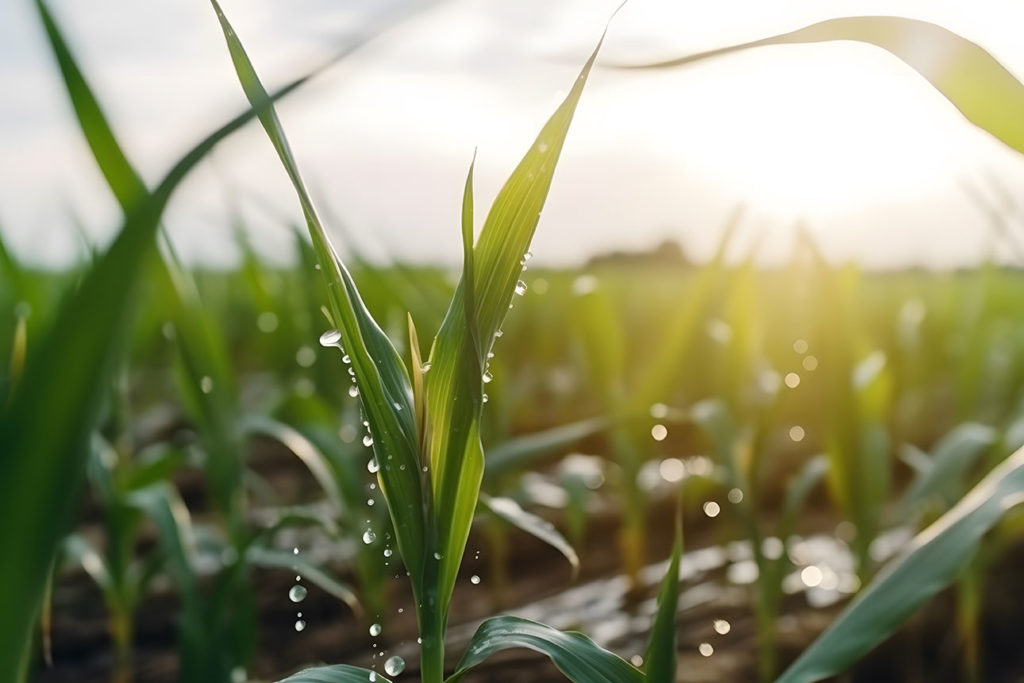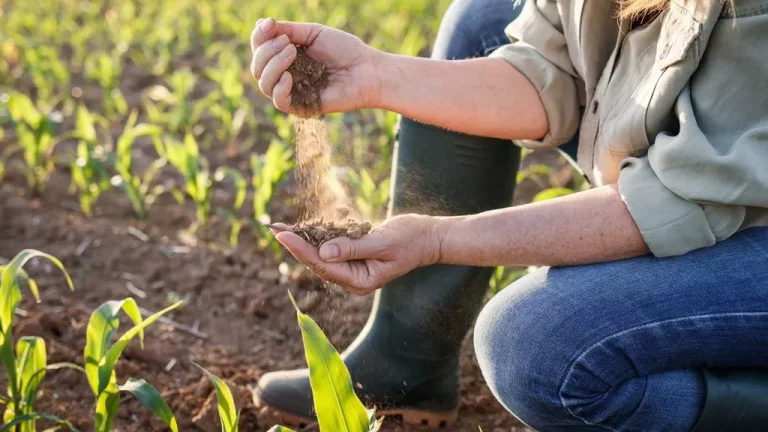Water, a major challenge for agriculture
While different crops require different amounts of water for their growth cycle, none can survive without this natural resource. In the event of water stress at key stages, the final yield is compromised. While a sunflower needs an average of 420 mm of water throughout its cycle, including 190 mm during grain filling, wheat requires 450 mm and corn needs 560 to 760 mm.
The impact of a lack of water will therefore depend not only on the species, but also on the vegetative stage. Corn, for example, has very high needs between the 10-14 leaf stage and the end of flowering, during the summer. A lack of water at that time, even for a few days, can drastically reduce the number of grains per ear, and therefore the final yield.
This means that crops have a high water footprint, but the water is essential in ensuring the quantity and quality of production. Water used for irrigation contributes to this footprint. Worldwide, around 20% of cultivated land is irrigated, yet it produces 40% of the world’s food. And, over the past twenty years, various innovations (varietal, agronomic, cultivation-based, etc.) have reduced crop water requirements by 30%, for the same yield.
However, with the increase in climate hazards and the rising frequency of periods of water stress, this progress is not always enough.
Did you know?
On a global scale, agriculture consumes almost 70% of the world’s freshwater (including rainfall).
The water cycle is under pressure: a disrupted balance
Water, which covers almost 70% of the Earth’s surface, is constantly being recycled. This unchanging phenomenon includes evaporation of water from oceans, lakes, rivers and soils, as well as the water contained in plants. The condensation forms clouds, and then falls as precipitation, in the form of rain or snow. The water then returns to the seas or infiltrates the soil to replenish underground reserves before being absorbed by plants: this completes the cycle.
Today, this process is disrupted by the variability of the weather. Rising temperatures amplify water evaporation, while changes in temperature and atmospheric pressure alter precipitation patterns. This disruption creates an oscillation between torrential rain and droughts, which are now more severe and more frequent. Not to mention the fact that groundwater stocks are also struggling to recover from one year to the next.
These phenomena have a direct impact on agricultural production and, consequently, on food security. In fact, 50% of the calories consumed worldwide come from water-sensitive crops: cereals, rice, corn, and soy.
Drought and water stress: understanding the difference
While drought is a meteorological phenomenon, water stress refers to the state of a plant lacking water. While a drought generally occurs after several days without rainfall, water stress can occur very quickly, especially if it occurs at a key stage in the crop’s development.
Solutions to optimize access to water in agriculture
While periods of water scarcity have become increasingly frequent in recent years, there are solutions to help farmers adapt to or work around water shortages. These include choosing more resilient varieties to limit the impact of a water deficit. Staggering the sowing date and choosing the right earliness can help avoid the riskiest periods for plant development.
Another point to focus on: careful weeding within a plot allows to reduce the competition for water between existing crops and weeds. In addition, adapting rotations, maintaining plant cover, and enriching the soil with organic matter are all actions that improve soil structure and, therefore, its ability to retain water.
As for irrigation, the challenge is to provide the right amount of water at the right time. Decision-support tools, such as sensors and probes, make it easier to manage inputs by anticipating critical periods and optimizing practices.
In recent years, the arrival of biosolutions has widened the range of possibilities and helped increase crop resistance to water stress. How is this done? By stimulating their stress resistance mechanisms or helping them mobilize the necessary resources, for example, by developing their root system to explore further and deeper into the soil, thereby optimizing water absorption.
Are you familiar with WUE?
WUE, for Water use efficiency, reflects the plant’s efficiency in using available water. The challenge for researchers over the next few years will be to improve this WUE in the context of increasingly unpredictable water availability at key moments in the crop cycle.
Phytosterols: a unique solution for reducing water consumption
Some biosolutions help crops to cope better with the onset of water stress. They send signals to the plant so that it goes into “alert” mode. Among the most promising molecules are phytosterols, lipids that are naturally present in plants. Applied as a preventive foliar treatment, they trigger the plant’s adaptation process even before the disturbance occurs.
Phytosterols activate physiological defense mechanisms that help plants cope with water shortage. The levers used include stimulating root growth and increasing the number of roots: two factors that help the plant explore the soil more widely and in greater detail, and thus capture more water resources. But there is also an effect above ground, in the plant’s foliage. Phytosterols regulate the opening of stomata, and therefore leaf evapotranspiration, according to the plant’s needs.
On corn, for example, when applied at the 6-10 leaf stage, these molecules reduce water requirements by up to 20%, improve the management of available resources, partially close stomata to limit evapotranspiration, and increase root development to access greater water reserves. This is also accompanied by the development of larger ears, greater biomass and, ultimately, higher yields. Because even in ideal climatic conditions, the application of phytosterols remains beneficial or, at worst, neutral. It has proven its effectiveness on corn, wheat, barley, soy, and sunflower.
Did you know?
With phytosterols, plants consume up to 20% less water.
Toward a more resilient agriculture in the face of climate uncertainty
Climate uncertainty is already upon us and is expected to intensify in the coming years For farmers whose crops are threatened by recurring water shortages, the aim is to opt for combined solutions employing genetics, agronomy, and biosolutions. This includes protecting soils so that they are able to conserve water, anticipating potential water stress as early as possible, using decision-support tools, and focusing on innovation, while identifying the solution best suited to your crop system, based on your own pedoclimatic context. The use of biosolutions, such as phytosterols, is one of the promising ways of preserving yields. Researchers in all fields remain committed to identifying ways of working around or adapting to these climate hazards.




